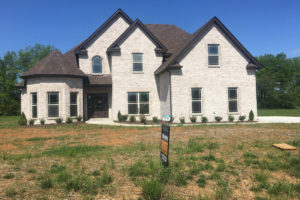
You Need To Know The Answers To The Following Questions
- Do you have bare patches?
- What kind of grass do you have?
- Is this a recent condition?
- Do you notice the same problem in several areas of the lawn?
- Have you recently sprayed the lawn with chemicals or fertilizer?
- Are you properly watering your lawn?
Identifying Common Lawn Diseases
Is something looking not quite right with your lawn, but you’re not sure what it is? Use this guide to common lawn diseases to help you identify what the problem is and learn how to treat it.
- Brown Patch – Grasses typically affected are tall fescue, perennial ryegrass, bent grasses, Kentucky bluegrass, and St. Augustine grass. It usually shows up as large, roughly circular, yet somewhat irregular patch that appears to be either dry or dead. The outside of the patch may sometimes appear to be darker than the inside. To heal this area, apply fungicides, do not supply too much nitrogen, and raise the mower height.
- Rust Diseases – Grasses typically affected are zoysia, perennial ryegrass and Kentucky bluegrass. Rust diseases appear as irregular light-green or yellow patches on the lawn, but if you look closely, you’ll see orange-yellow rust spores on the individual grass blades. You will especially see it in shady areas with poor ventilation. Fertilize your lawn throughout the year to help prevent it.
- Summer patch – This usually appears between June and September, during periods of high humidity when daytime temperatures are over 85 degrees. It will show up in the form of irregular brown patches, rings, and crescent shapes. Apply lawn fungicide according to label directions and you’ll soon have the problem under control.
- Fairy ring – This often consists of a halo ring of mushrooms after a rainfall. If fairy ring symptoms consist only of mushrooms and there is no zone of dark green grass, the mushrooms can be raked off and disposed of. To prevent this, keep your lawn dethatched, aerated, and properly watered and fertilized.
Numerous disease problems occur on turf grass in Kentucky and these frequently cause extensive damage. In many cases, a disease is blamed for poor quality turf when, in reality, it may be only a contributing factor or not involved at all. Frequently, dead and dying grass is caused by improper fertilization, chemical burn, mower problems, pet urine, insect injury, dry or wet spots, thatch, competition from other plants, or from any other improper management. Accurate diagnosis of the problem is essential for proper control
If you are unsure of how to diagnose the lawn problems, call a professional lawn service as they can help by diagnosing and restoring your lawn.
Contact us (859-314-LAWN) for more information or a free instant quote!
—
 About Green & Grow
About Green & Grow
Green & Grow is a full-service lawn care company specializing in fertilization & weed control, aeration & seeding, insect control, and more!

 About Green & Grow
About Green & Grow